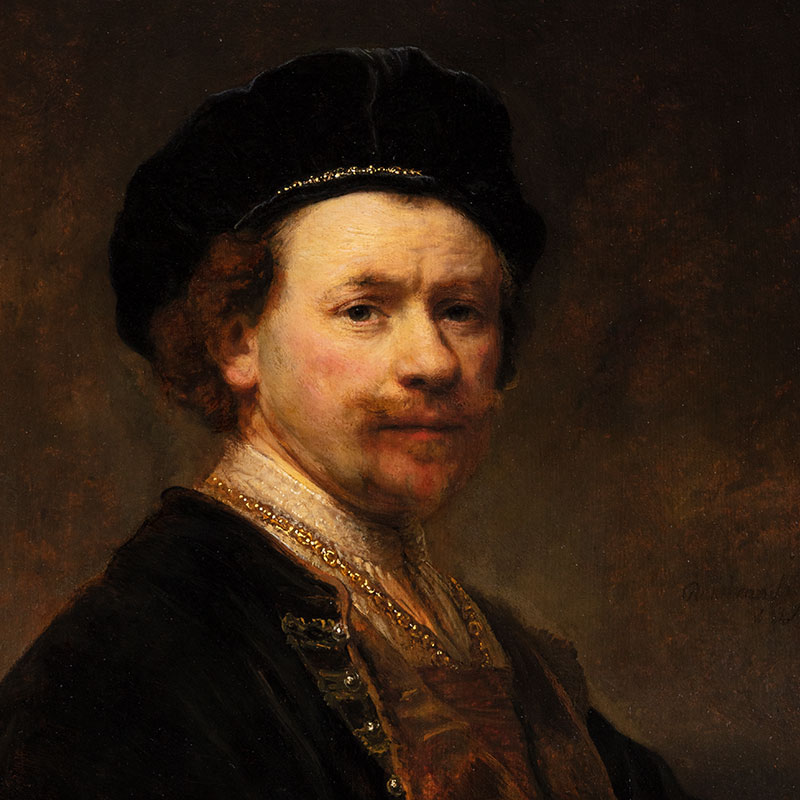Los Angeles County Museum of Art
The Raising of Lazarus
Rembrandt’s dramatic portrayal of what is considered one of Christ’s most extraordinary miracles—the raising of Lazarus from the dead—hinges on the connection across space between the commanding figure of Christ and the limp body of Lazarus. Typical of his early history paintings (see also nos. 5 and 6), Rembrandt used theatrical lighting and gestures to heighten the emotional impact of the scene. The beam of light penetrating the opening of the cave (at left) reveals both the miracle and the stunned reactions of the spectators. It highlights Christ’s upraised arm and the white of his eye, spotlights the head and upraised hands of Mary Magdalene at his feet, and barely reveals the recoiling figure of a woman in the immediate foreground. The expressive faces of the old men are reminiscent of Rembrandt’s character studies of the same period, such as An Old Man in Military Costume (no. 4). Scratch marks and raised golden highlights enliven the dark interior and draw attention to the glittering fittings of Lazarus’s sword and other effects hanging on the wall above the tomb.
The Raising of Lazarus, about 1630–32. Oil on panel, 37 15/16 x 32 in. (94.77 x 81.28 cm). Los Angeles County Museum of Art. Gift of H. F. Ahmanson and Company, in memory of Howard F. Ahmanson, M.72.67.2. Photo © Museum Associates/LACMA













